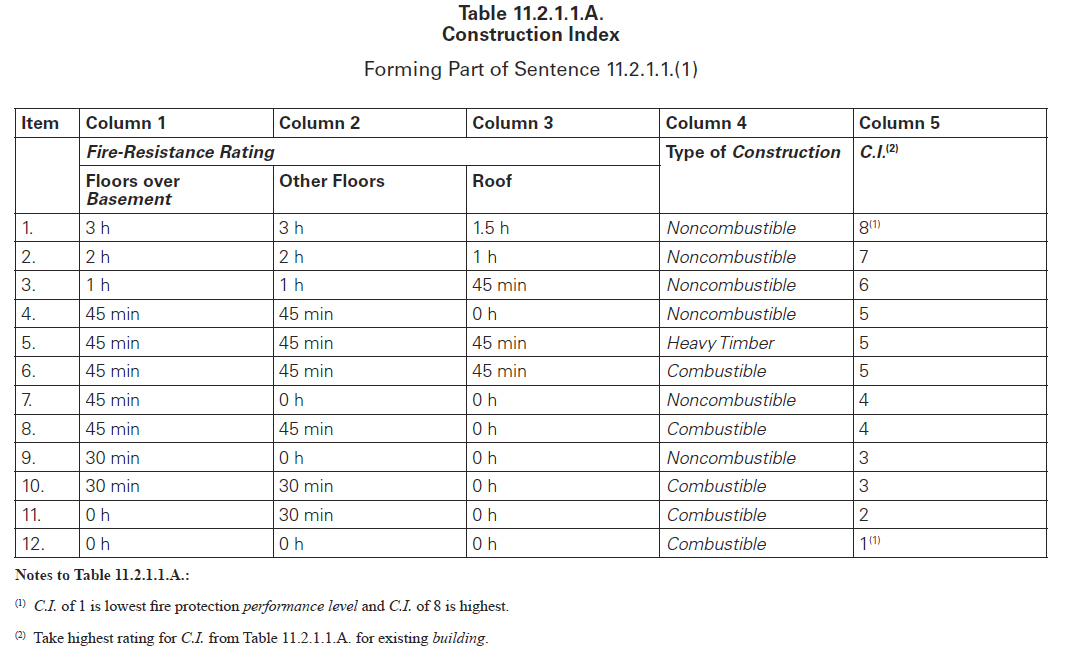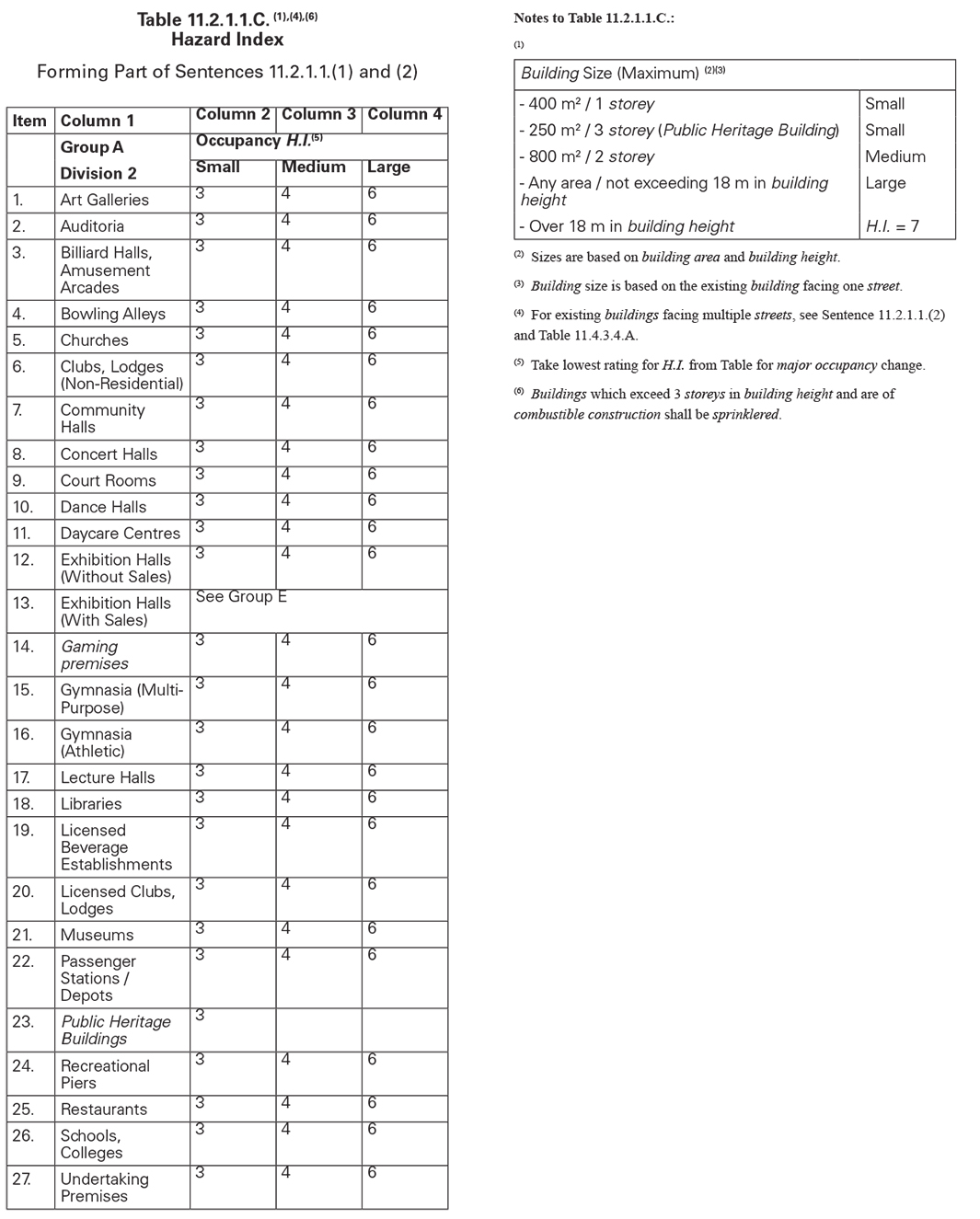.png)
.png)
School of Architectural Technology
Faculty of Applied Science and Technology
ARCH34231 - ARCHITECTURAL STUDIO 6
MODULE 8: ONTARIO BUILDING CODE PART 11 - INTRODUCTION
"In the course of this module the learner will become familiar with Part 11 of the Ontario Building Code, and understand how it can be used to "circumvent" some of the requirements of other parts of the OBC when the proposed project includes an existing building".
Contents - Introduction
Contents - Detailed Use of Part 11
1. When can we apply Part 11 of the OBC?
| Where Applicable? | |
| Applicable to buildings or parts of buildings at least five years old. | |
| Includes application to building additions of any age where the original building is at least five years old. | |
| Part 11 Renovation applies to all major occupancies, but NOT to buildings regulated under the Hotel Fire Safety Act. | |
. The Theory behind Part 11
| Part 11: What it is all about | |
| Acknowledges that existing buildings cannot comply with the current code. | |
| Describes a hazard analysis technique | |
| Evaluates the risk associated with the retention of exiting building systems | |
| Identifies acceptable levels of risk | |
| Part 11: How it works | |
| Prompts a review of the performance level of a building before a contemplated alteration | |
| Requires an evaluation of hazards associated with the contemplated alteration | |
| Provides risk-mitigating design approaches to ensure that the performance level is maintained | |
| Every building has a level of "health" or "well-being' associated with it. This condition of health is termed "Performance Level". | |
| "Performance Level" can be described as the manner in which a building system reacts or fulfills its intended purpose. | |
| Any alteration of a building is assumed to change the performance level of a building. | |
| Proposed alterations are not permitted to reduce the performance level of the building | |
| The determination of the performance level is an analysis of specific elements of a building which contribute to the well-being of the building and its occupants. These elements are referred to as "building systems". |
4
. Building Systems
| A "building system" is a functioning element which provides protection to a building or enables the continued use of a building. | |
Types of Building Systems: Building
systems can be categorized into four subsystems:
|
|
| Exterior Building Systems: |
These systems maintain a barrier between the harsh and unstable exterior environment and the habitable interior environment. |
| Structural Building Systems: |
These systems ensure the stability of the building under load conditions. |
| Occupant Safety Building Systems: |
These systems permit occupants to reach safe areas or evacuate the building in the event of a fire. |
| Occupant Health Building Systems: |
These systems enable the habitation of the building under normal use conditions. |
Detailed Use of Part 11
5
. "Construction Index" or "C.I."
|
The "Construction Index" (C.I.) represents a numerical value from 1 to 8 identifying the expected performance level of a building with respect to the type of construction and fire protection |
 |
6.
"Hazard Index" or "H.I."
|
The "Hazard Index" (H.I) represents a numerical value from 1 to 8 designating the expected fire hazard to occupants of the building based on:
|
| SAMPLE HAZARD INDEX TABLE: |
 |
|
Major occupancy classifications are identical to those contained in Parts 3 and 9 of the OBC. |
| Building sizes are classified as small, medium or large. Criteria for determination of building size differs with various major occupancies. |
| Building size criteria include building area and building height. |
|
Building size is based on existing buildings facing one street. |
7
. Relationship of Construction Index and Hazard Index
|
Where the performance level of an existing building is reduced, additional upgrading is required to insure that the CONSTRUCTION INDEX IS EQUAL TO OR GREATER THAN THE HAZARD INDEX.
|
|
Where the performance level of an existing building is reduced because a building is changed to one that would require non-combustible construction if new, the addition of sprinklering will provide the equivalent of non-combustible construction.
|
8
. "Compliance Alternatives" (and "Alternative Measures")
| In regards to other code requirements, Part 11 of the OBC does permit some acceptable relaxations or substitutions. These are outlined in the compliance alternatives outline in the tables at the end of Part 11. |
| If a compliance alternative is not listed in the tables of Part of 11 then the designer must default to other Parts of the code for compliance. |
| SAMPLE COMPLIANCE ALTERNATIVE TABLE: |
 |
|
Use of Compliance Alternatives is permitted where it is impractical to apply requirements of other parts of the Building Code, with the exception of requirements for exit signage and emergency lighting. |
| "Alternative Measure": This is a proposal for some different approach which may not be outlined in the list of "Compliance Alternatives" but could be defended when evaluated on the basis of the Objectives and Functional Statements in Division A, Parts 2 and 3 of the OBC2006. |
8. Renovations to Existing Building Systems
| Material Alteration or Repair of an Existing System | |
|
|
| New System or Extension of an Existing System: | |
|
|
9. When does a renovation move from being "Basic" to being "Extensive"?
| Basic Renovation | |
|
|
| The performance level of a building is decreased where: | |
| 1. An increase in building occupant load of more than 15% (exceptions: boarding houses with occupant loads of 11-14 / multiple dwellings with occupant loads of 11-16). | |
| 2. An increase in occupant load of 15% or less BUT the increase is more than 15% above the occupant load for which a fire alarm system is required or the exit capacity of the space, floor, or building. | |
| 3. A change of major occupancy where the hazard index of the new major occupancy exceeds that of the existing building. | |
| 4. Structural inadequacy due to a change of occupancy. | |
| Extensive Renovation | |
|
|
10. Compensating Construction
|
Where the hazard index of the new major occupancy is greater than the hazard index of the existing major occupancy, additional upgrading may be required. |
|
The Additional Upgrading Table is used to determine additional upgrading required for renovation involving a new major occupancy where classification results in a H.I. (Hazard Index) greater than the existing building’s C.I. (Construction Index). |
|
|
11. Early Warning/Evacuation Table (OBC 11.4.3.3.)
|
The EW/Evac Table is used to determine the extent of early warning and evacuation systems upgrading required based on the type of renovation performed. |
|
Early Warning systems consist of the fire-alarm system. |
|
Evacuation Systems include access to exit and exit width capacity, travel distance, number of exits, exit signage and emergency lighting. |
|
EW/Evac systems are required to be upgraded in conformance with other parts of the Building Code. |
12. Change of Major Occupancy
|
|